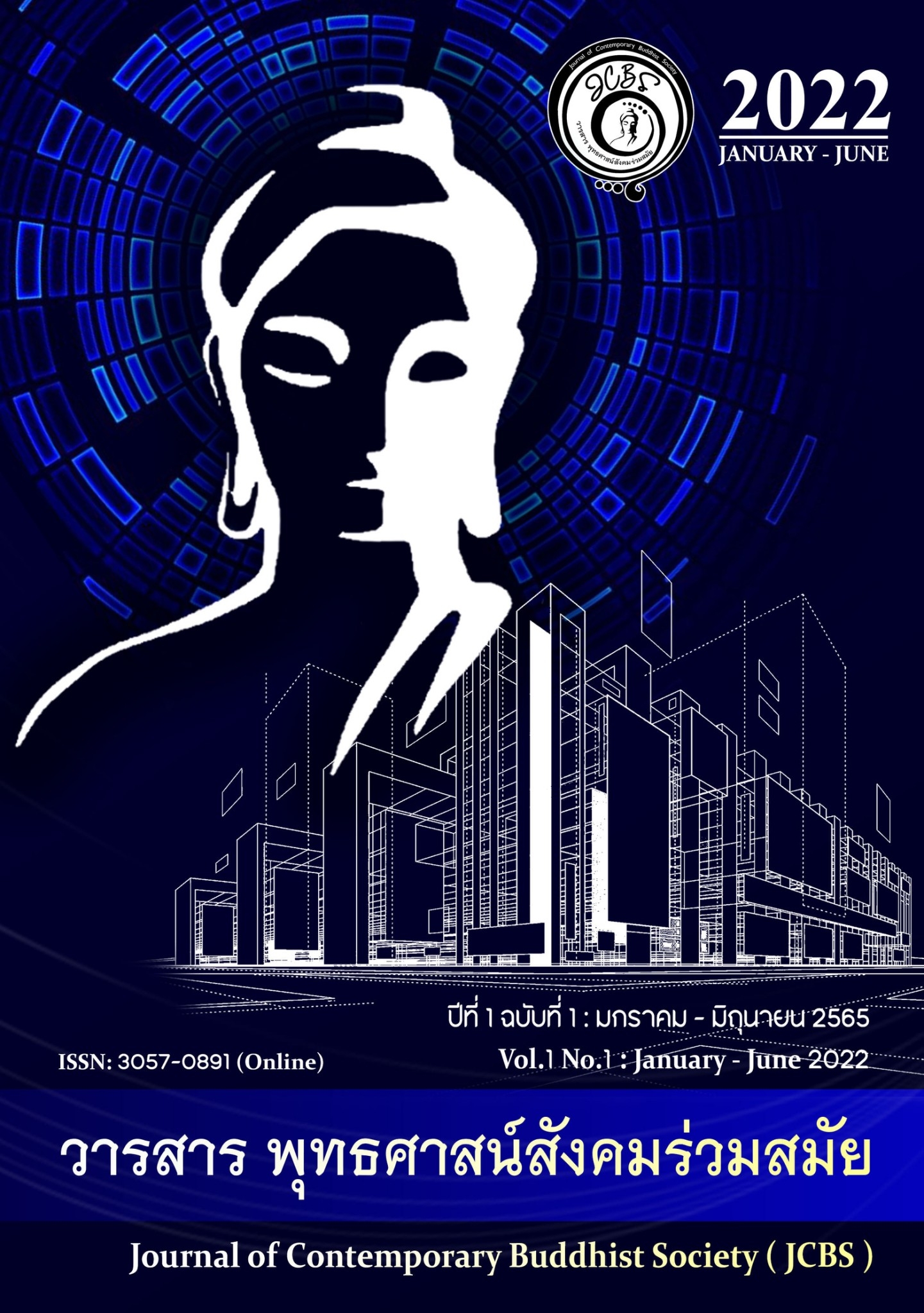Kesaputta Sutta: Philosophy regarding the path to the end of life's pursuits
Keywords:
the best of pursuit, truth, philosophicalAbstract
This academic article aims to study "The Ultimate Seek" for Truth in Philosophy According to the study, it was found that there are 2 major ways of seeking truth in philosophy as follows: (1) Sensory or experiential pursuit of truth which philosophy is called inductive truth-seeking which is a way of acquiring materialistic knowledge.(2) the ultimate pursuit of rational truth which philosophy is called Deductive truth-seeking is a method of seeking truth among idealists.
The ultimate philosophical pursuit of truth that appears in the Kesputta Sutta (Kalama Sutra) is the pursuit of the Ten Truths. After that, use careful judgrnent and then believe in the ultimate process of seeking truth in philosophy as shown in the Kesputta Sutta. There are 2 processes. (1) The process of seeking truth based on experience, ile. the philosophical use of internal and external consciousness is called inductive pursuit of truth In the Kesputta Sutra, verses 1-4 and (2) The pursuit of truth based on reason, which is philosophically called The deductive form of idealism in the Kesputa Sutra is verses 5-10, the ultimate part of seeking truth in the Kesputa Sutra. It is the use of both the methods of induction, namely the paratoghosha, and the abbreviated, that is, the use of yoniso manasikara, after carefull consideration and then believing.
References
จำนงค์ ทองประเสริฐ. (2541). ปรัชญาประยุกต์ชุดอินเดีย. กรุงเทมหานคร: เกษมมบรรณกิจ.
ชาญณรงค์ บุญหนุน. (2540). "ทฤษฎีความเป็นจริงในพุทธปรัชญาเถรวาท". วิทยานิพนธ์อักษรศาสตรดุษฎีบัณฑิต. บัณฑิตวิทยาลัย: จุฬาลงกรณ์มหาวิทยาลัย.
บุญมี แท่นแก้ว. (2543). ปรัชญากับศาสนา. กรุงเทพมหานคร: สำนักพิมพ์โอเดียนสโตร์.
ราชบัณฑิตยสถาน. (2556). พจนานุกรมฉบับราชบัณฑิณฑิตยสถาน พ.ศ.ศ. 2554. พิมพ์ครั้งที่ 2. กรุงเทพมหานคร: ราชบัณฑิตยสถาน.
ราชบัณฑิตยสถาน. (2548). พจนานกรมศัพท์พท์ปรัชญา อังกฤษ-ไทย ฉบับราชบัณฑิตยสถาน. กรุงเทพมหานคร: ราชบัณฑิตยสถาน.
พระธรรมโกศาจารย์ (ประยูร ธมฺมจิตโต). (2552). ปรัชญากรึก บ่อเกิดภูมิปัญญาตะวันตก. พิมพ์ครั้งที่ 7. กรุงเทพมหานคร: สำนักพิมพ์ศยาม.
พระมหาบุญไทย ด้วงวงศ์. (2540). "การใช้เหตุผลทางตรรกะในพระไตรปิฎก". วิทยานิพนธ์ศิลปศาสตรมหาบัณฑิต สาขาวิชาปรัชญา. บัณฑิตวิทยาลัย: มหาวิทยาลัยเชียงใหม่.
มหาจุฬาลงกรณราชวิทยาลัย. (2539). พระไตรปิฎกภาษาไทย ฉบับมหาจุฬาลงกรณราชวิทยาลัย. กรุงเทพมหานคร: โรงพิมพ์มหาจุฬาลงกรณราชวิทยาลัย.
สมภาร พรมทา. (2542). พุทธปรัชญา : มนุษย์สังคม และปัญหาจริยธรรม. กรุงเทพมหานคร: จุฬาลงกรณ์มหาวิทยาลัย.
เสาวนีย์ พงศกรเสถียร. (2557). "การศึกษาวิเคราะห์แนวคิดเรื่องญาณวิทยาในธัมมปทัฏฐกถา". วิทยานิพนธ์พุทธศาสตรมหาบัณฑิต สาขาปรัชญา. บัณฑิณฑิตวิทยาลัย: มหาวิทยาลัยมหาจุฬาลงกรณรวิทยาลัย.
เอกวุฒิ บุตรโคษา. (2553). "การศึกษาเรืองประโยชน์นิยมในพุทธปรัชญาเถรวาท". สารนิพนธ์ศาสนศาสตรมหาบัณฑิต. บัณฑิตวิทยาลัย: มหาวิทยาลัยมหามกุฎราชวิทยาลัย.
Del Kiernan-Lewis. (2000). Learning to Philosophize a Primer. Belmont: Wadsworth.
Downloads
Published
How to Cite
Issue
Section
License
Copyright (c) 2024 Journal of Contemporary Buddhist Society = JCBS

This work is licensed under a Creative Commons Attribution-NonCommercial-NoDerivatives 4.0 International License.



